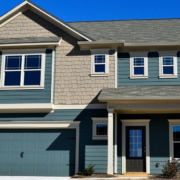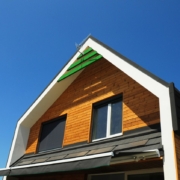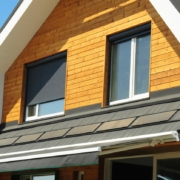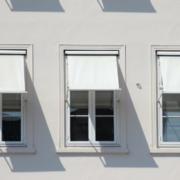Different Types of Window Treatments
Last Updated on July 29, 2021 by Stellar Sunscreens
What is a Window Treatment?
Window treatment is conducted with a purpose of controlling the amount of UV rays or sunlight that enter a home. Further, it preserves the floors, furniture, and walls by controlling the sun’s glare. Afterall, constant exposure of these furniture, flooring or walls to sunlight can easily fade the paint and cause other damages.
Therefore, window treatment helps to control the amount of sun’s glare that enters the house. This treatment can be categorized in two types; outdoor window treatment and indoor window treatment. Both these treatments will offer more control on the sunlight entering the house and keep the overall room temperature low.
When looking into window treatments for your home you have several options for the inside and outside. You will need to know your expectations and goals of the window treatments are in order to choose the right one for you. This could be to decrease the heat from direct sunlight, save money on energy, blocking sunlight that is causing damage to furniture or wood floors, or to add value to your home.
How much control over the treatment and their mobility are other factors that help pick the right window coverings. If you prefer to control how much sunlight gets into your home, or if you would rather just have constant shade; these are important considerations to make when making these types of decisions.
Let’s look into the different options you have for window treatments.
Note: At Stellar Sunscreens, we specialize in custom sunscreens, and do not install any other type of window treatment/shutters. The information below is to provide our clients with information on all of the options that exist for window coverings. If you are interested in sunscreens, please call us for a free estimate!
Outdoor Window Treatments
Solar Sunscreens
Solar sunscreens can be placed on either the inside or outside of your home. Solar screens can be fixed onto your windows or made into roller shades to allow more control of the screens.
These screens are used to block out UV rays, glare, and heat from the sun. TAs you can imagine, they are best for windows with direct sunlight, as it can help decrease the heat and glare entering your home.
Using a sunscreen for your windows can decrease a room’s temperature by about 12 degrees Fahrenheit. This will aid in lowering energy costs due to keeping your home cool. Additionally, it also adds value to your home.
When using solar sunscreens, there is still visibility when looking outside, through them. These are similar to an insect screen, but provide more solar protection and cooling effects. So they have limited effects on your ability to see the landscape and environment around your home.
Sunscreens help to protect your furniture, floors, and interior decorations from discoloration and wear from the sun’s rays too!.
Awnings
Awnings are fixed or retractable shades placed above your windows to help block out some sunlight. Awnings are made from a variety of materials such as metal or synthetic fabric.
Awnings dont help to decrease the amount of heat that enters into your home from the sun. When using an awning, there doesn’t need to be ventilation holes in the awning to prevent hot air from being trapped underneath.
If getting fixed awnings on your home, keep in mind that though awnings can help reduce heat in the summer months it can also increase heating cost during winter. To decrease this possibility have your awnings angled in order to capture the winter time sunlight or go with a retractable awning to give you more control.
Shutters
Window shutters are another kind of window treatment that offers a stable and solid covering. Usually, shutters will consist of horizontal rails and vertical stiles that are all mounted within a frame. They are placed on the outside of the window either hinged to the sides of your window or placed above to roll down onto your window.
The hinged shutters resemble old-time bar swinging doors that can be closed to provide privacy and reduce heat gain. These are usually made of wood or vinyl depending on your aesthetic.
Roller shutters are slats made of aluminum or plastic that interlock when rolled down to also provide privacy and reduce heat in your home.
Shutter usually do not provide visibility into or out of your home. This is perfect for those looking for security and privacy. These are also used for areas that experience intense storms as it can help protect the windows.
Indoor Window Treatments
Insulated Cellular shades
For homeowners who wish to retain and regulate room heat, insulated cellular shades are ideal. With these shades, you are able to keep warm without spending too much on heating bills, and at the same time, you get to maintain your home’s style and good taste. It’s one of those window covering treatments that are chosen by those who want energy and cost efficiency.
These shades resemble an accordion and will easily fold up or down to help provide shade in your home. Insulated cellular shades provide insulation for your windows, due to their honeycomb design that creates small air pockets that reduce the amount of heat to pass through.
These shades provide little visibility, if any, to the outdoors. The shades do provide protection from heat gain during the summer months and heat loss during the winter months. You can choose to go for single or double cellular shades, as both are highly recommended but if we must add, stay away from the triple cell if you do not want something that’s too heavy for your windows.
Using cellular shades on tracks is the most effective way to make sure you get maximum efficiency. You are also able to have some control due to being able to adjust these shades to cover any portion of the window at a time. Over time, they have also made their way to the list of the top options for indoor window treatments, especially if you prefer to achieve a sleek and minimal look.
Curtains and Blinds
Curtains are made of fabrics and sometimes lined with plastic to help reduce heat gain. Curtains’ ability to block out the sun’s heat depends on color and type of fabric used. They are the usual go-to treatment for those who do not like to try too daring window treatments, but at the same time, still remain to be a classic, yet elegant home décor.
Curtains come in a wide, almost endless variety of fabrics, patterns, colors, designs, and styles. Its versatility is among the many reasons why most homes still have curtains on their windows even now. A clear fabric curtain will provide little if any, protection from the sun’s rays, but a light to medium-colored blackout curtain will provide a sufficient amount of protection from heat gain.
To get the most out of curtains they will need to be installed very close to the window and reach at least to the window sill. Adding a cornice to the top of the window will help get the most out of your curtains. In order to get the maximum reduction in heat gain, the curtains must be closed with little to no sunlight getting through.
Blinds, on the other hand, afre another type of window covering that’s as timeless as curtains, but not quite as much. The term comes from a literal context – as they were invented to blind the sight of those who are inside and outside of a particular home. Through its help, one can maintain privacy without being too sneaky about it.
Most people who would choose blinds are the kinds of homeowners who like practicality and style in just one go. Window blinds can be manually or remote controlled depending on your preference as a buyer. Remote controls often work by simply rotating the blinds from an open position.
There are also several types of blinds that you can choose from, depending on your desired style and purpose. There are vertical blinds, Venetian, mini, micro, panel, and several others. The types of blinds have grown over the years, with manufacturers that are aiming to provide the best window treatment solution for all kinds of customers.
Blinds are vertical or horizontal slats usually made of wood or plastic. These do decrease heat gain and provide some added control over visibility and glare due to being able to adjust the angle of the blinds.
Window Film
Window films consist of three layers that are applied directly to the glass; adhesive, polyester film and a coating to reduce scratches. There are several additional options you can choose from such as tints or UV blocking films.
Window films do help reduce heat gain and can be great in summer months. However, during the winter months it will continue to block the sun’s rays that would otherwise help in heating your home.
Window films also help with reducing UV rays that could cause damage to your interior decorations. Window films are great for people who do not want anything blocking their visibility.
Getting the window treatment that works best with your style and utilization is important. Combining window treatments is a great way to provide added protection for your home’s interior as well as decrease your energy cost. With several options adding value to your home it’s a win-win situation.
All you have to do is become familiar with the different window treatments available and how they work – and from there, shortlist your choices. Try to envision the kind of style and ambiance that you want to achieve for your home. From there, you can surely come up with the best window treatment that can greatly benefit your home décor and your satisfaction as the owner.






